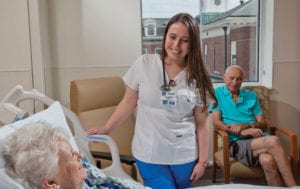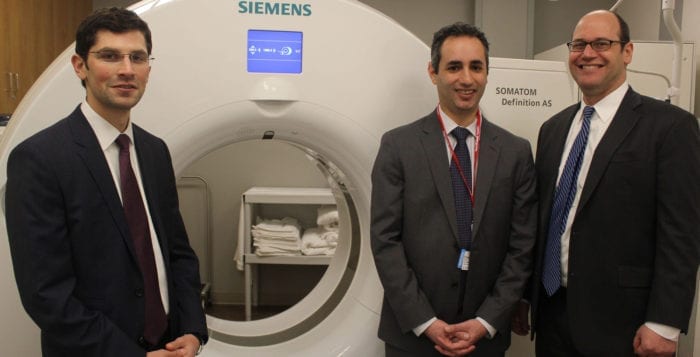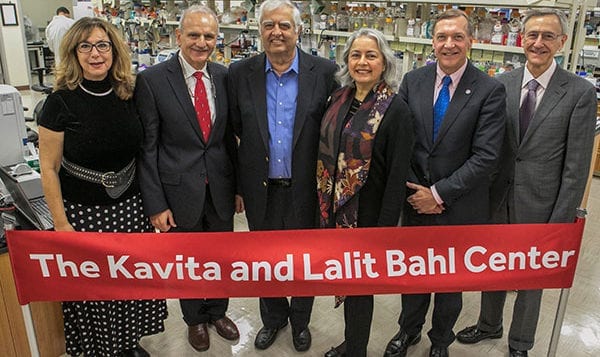By David Dunaief

It seems like almost everyone is diagnosed with gastroesophageal reflux disease (GERD), or at least it did in the last few weeks in my practice. I exaggerate, of course, but the pharmaceutical companies do an excellent job of making it appear that way with advertising. Wherever you look there is an advertisement for the treatment of heartburn or indigestion, both of which are related to reflux disease.
GERD, also known as reflux, affects as much as 40 percent of the U.S. population (1). Reflux disease typically results in symptoms of heartburn and regurgitation brought on by stomach contents going backward up the esophagus. For some reason, the lower esophageal sphincter, the valve between the stomach and esophagus, inappropriately relaxes. No one is quite sure why it happens with some people and not others. Of course, a portion of reflux is physiologic (normal functioning), especially after a meal (2).
GERD risk factors are diverse. They range from lifestyle — obesity, smoking cigarettes and diet — to medications, like calcium channel blockers and antihistamines. Other medical conditions, like hiatal hernia and pregnancy, also contribute (3). Diet issues include triggers like spicy foods, peppermint, fried foods and chocolate.
Smoking and salt’s role

One study showed that both smoking and salt consumption added to the risk of GERD significantly (4). Risk increased 70 percent in people who smoked. Surprisingly, people who used table salt regularly saw the same increased risk as seen with smokers. Treatments vary, from lifestyle modifications and medications to surgery for severe, noticeable esophagitis. The goal is to relieve symptoms and prevent complications, such as Barrett’s esophagus, which could lead to esophageal adenocarcinoma. Fortunately, Barrett’s esophagus is not common and adenocarcinoma is even rarer.
Medications
The most common and effective medications for the treatment of GERD are H2 receptor blockers (e.g., Zantac and Tagamet), which partially block acid production, and proton pump inhibitors (e.g., Nexium and Prevacid), which almost completely block acid production (5). Both classes of medicines have two levels: over-the-counter and prescription strength. Here, I will focus on PPIs, for which more than 113 million prescriptions are written every year in the U.S. (6).
PPIs include Nexium (esomeprazole), Prilosec (omeprazole), Protonix (pantoprazole) and Prevacid (lansoprazole). They have demonstrated efficacy for short-term use in the treatment of Helicobacter pylori-induced (bacteria overgrowth in the gut) peptic ulcers, GERD symptoms and complication prevention, and gastric ulcer prophylaxis associated with NSAID use (aspirin, ibuprofen, etc.) as well as upper gastrointestinal bleeds.
However, they are often used long-term as maintenance therapy for GERD. PPIs used to be considered to have mild side-effects. Unfortunately, evidence is showing that this may not be true. Most of the data in the package inserts is based on short-term studies lasting weeks, not years. The landmark study supporting long-term use approval was only one year, not 10 years. Maintenance therapy usually continues over many years.
Side effects that have occurred after years of use are increased risk of bone fractures and calcium malabsorption; Clostridium difficile, a bacterial infection in the intestines; potential B12 deficiencies; and weight gain (7).
Fracture risks
There has been a debate about whether PPIs contribute to fracture risk. The Nurses’ Health Study, a prospective (forward-looking) study involving approximately 80,000 postmenopausal women, showed a 40 percent overall increased risk of hip fracture in long-term users (more than two years’ duration) compared to nonusers (8). Risk was especially high in women who also smoked or had a history of smoking, with a 50 percent increased risk. Those who never smoked did not experience significant increased fracture risk. The reason for the increased risk may be due partially to malabsorption of calcium, since stomach acid is needed to effectively metabolize calcium.
In the Women’s Health Initiative, a prospective study that followed 130,000 postmenopausal women between the ages of 50 and 79, hip fracture risk did not increase among PPI users, but the risks for wrist, forearm and spine were significantly increased (9). The study duration was approximately eight years.
Bacterial infection
The FDA warned that patients who use PPIs may be at increased risk of a bacterial infection called C. difficile. This is a serious infection that occurs in the intestines and requires treatment with antibiotics. Unfortunately, it only responds to a few antibiotics and that number is dwindling. In the FDA’s meta-analysis, 23 of 28 studies showed increased risk of infection. Patients need to contact their physicians if they develop diarrhea when taking PPIs and the diarrhea doesn’t improve (10).
B12 deficiencies
Suppressing hydrochloric acid produced in the stomach may result in malabsorption issues if turned off for long periods of time. In a study where PPIs were associated with B12 malabsorption, it usually took at least three years duration to cause this effect. B12 was not absorbed properly from food, but the PPIs did not affect B12 levels from supplementation (11). Therefore, if you are taking a PPI chronically, it is worth getting your B12 and methylmalonic acid (a metabolite of B12) levels checked and discussing possible supplementation with your physician if you have a deficiency.
My recommendations would be to use PPIs short-term, except with careful monitoring by your physician. If you choose medications for GERD management, H2 blockers might be a better choice, since they only partially block acid. Lifestyle modifications may also be appropriate in some of the disorders, with or without PPIs. Consult your physician before stopping PPIs since there may be rebound hyperacidity (high acid produced) if they are stopped abruptly.
Lifestyle modifications
A number of modifications can improve GERD, such as raising the head of the bed about six inches, not eating prior to bedtime and obesity treatment, to name a few (12). In the same study already mentioned with smoking and salt, fiber and exercise both had the opposite effect, reducing the risk of GERD (5). This was a prospective (forward-looking) trial. The analysis by Journal Watch suggests that the fiber effect may be due to its ability to reduce nitric oxide production, a relaxant for the lower esophageal sphincter (13).
Obesity
In one study, obesity exacerbated GERD. What was interesting about the study is that researchers used manometry, which measures pressure, to show that obesity increases the pressure on the lower esophageal sphincter significantly (14). Intragastric (within the stomach) pressures were higher in both overweight and obese patients on inspiration and on expiration, compared to those with normal body mass index. This is yet another reason to lose weight.
Eating prior to bed — myth or reality?
Though it may be simple, it is one of the most powerful modifications we can make to avoid GERD. There was a study that showed a 700 percent increased risk of GERD for those who ate within three hours of bedtime, compared to those who ate four hours or more prior to bedtime. Of note, this is 10 times the increased risk of the smoking effect (15). Therefore, it is best to not eat right before bed and to avoid “midnight snacks.” Although there are a number of ways to treat GERD, the most comprehensive have to do with modifiable risk factors. Drugs have their place in the arsenal of choices, but lifestyle changes are the first and most effective approach in many instances.
References:
(1) Gut 2005;54(5):710. (2) Gastroenterol Clin North Am. 1996;25(1):75. (3) emedicinehealth.com. (4) Gut 2004 Dec.; 53:1730-1735. (5) Gastroenterology. 2008;135(4):1392. (6) JW Gen Med. Jun. 8, 2011. (7) World J Gastroenterol. 2009;15(38):4794–4798. (8) BMJ 2012;344:e372. (9) Arch Intern Med. 2010;170(9):765-771. (10) www.FDA.gov/safety/medwatch/safetyinformation. (11) Linus Pauling Institute; lpi.oregonstate.edu. (12) Arch Intern Med. 2006;166:965-971. (13) JWatch Gastro. Feb. 16, 2005. (14) Gastroenterology 2006 Mar.; 130:639-49. (15) Am J Gastroenterol. 2005 Dec.;100(12):2633-2636.
Dr. Dunaief is a speaker, author and local lifestyle medicine physician focusing on the integration of medicine, nutrition, fitness and stress management. For further information, visit www.medicalcompassmd.com or consult your personal physician.




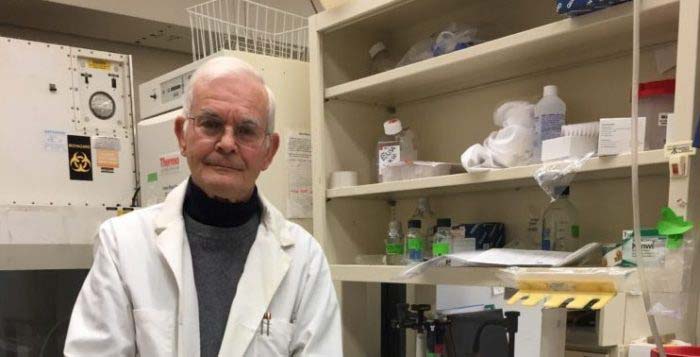
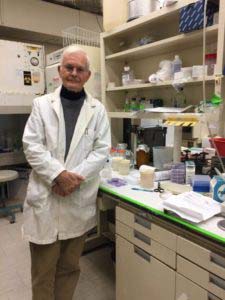


 You also write in the book how Colette learned from “The Oprah Winfrey Show” that she had the “disease to please” syndrome. How did you overcome worrying about what everyone thought?
You also write in the book how Colette learned from “The Oprah Winfrey Show” that she had the “disease to please” syndrome. How did you overcome worrying about what everyone thought? 
